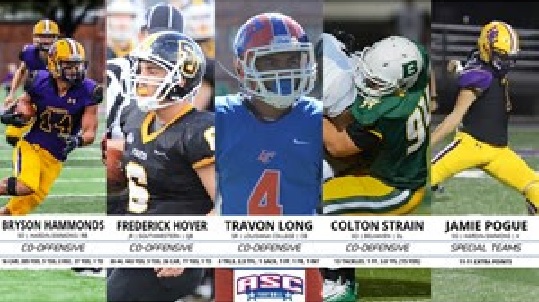

- #National football conference football players pro#
- #National football conference football players professional#
As opposed to today’s standard 16-game schedule, clubs in 1920 scheduled their own opponents and could play nonleague and even college squads that counted toward their records. Money was so tight that Halas carried equipment, wrote press releases, sold tickets, taped ankles, played and coached for the Decatur club. Forward passes were rare, coaching from the sidelines was prohibited and players competed on both offense and defense.
#National football conference football players pro#
While the gridiron dimensions were the same in 1920 as today, the pro game itself was quite different. The first head-to-head battles in the league occurred one week later as Dayton topped Columbus 14-0 and Rock Island pasted Muncie 45-0. The first game involving an APFA team took place on September 26, 1920, at Douglas Park in Rock Island, Illinois, as the hometown Independents flattened the St. The team representatives unanimously selected the 32-year-old Thorpe, the Canton Bulldogs star who although past his prime was still touted by newspapers such as the Milwaukee Journal as the “world’s greatest athlete.” Indeed, the selection of the gridiron’s greatest gate attraction garnered more ink in newspapers around the country than the formation of the APFA itself. The new league needed a president to lead the organization and be its public face, and the choice required little debate.

#National football conference football players professional#
Then, the men moved and seconded a proposal to form a confederation known as the American Professional Football Association (APFA). (So unfamiliar were the teams that even the meeting minutes mistakenly listed the Cardinals, who played home games at Normal Park on Chicago’s Racine Avenue, as being from the Wisconsin city of the same name.) Unable to squeeze into Hay’s office on the steamy night, the football pioneers, including Jim Thorpe and George Halas, sat on the running boards and fenders of the $3,000 cars on the showroom floor and grabbed cold beer bottles from an icy bucket as they hammered out an agreement.Īccording to the meeting minutes typed on the letterhead of the Akron Professional Football Team, the first item of business was an inauspicious one-the withdrawal of Massillon before the league even officially formed. Hay gathered representatives from 11 professional football clubs sprinkled across Ohio, Illinois, Indiana and New York: Akron Pros, Canton Bulldogs, Cleveland Indians, Dayton Triangles, Decatur Staleys, Hammond Pros, Massillon Tigers, Muncie Flyers, Racine Cardinals, Rochester Jeffersons and Rock Island Independents. Nearly a month later, a deal was ready to be struck. According to the Canton Evening Repository, the goal of the new venture would be “to raise the standard of professional football in every way possible, to eliminate bidding for players between rival clubs and to secure cooperation in the formation of schedules.” Hay, the owner of the reigning Ohio League champion Canton Bulldogs, had invited representatives from three other in-state teams to an organizational meeting at his showroom on August 20 where they agreed on a broad outline of a new association.

The owners of these independent pro teams coveted a strong league such as the one baseball had in order to gain more control over the sport-and their finances. Even worse for team owners, they were bleeding cash because of soaring player salaries and intense bidding wars as they poached players from other squads. They had come to Ralph Hay’s dealership not in search of a new set of wheels, however, but a new professional football league to save them from themselves.īy 1920, pro football remained thoroughly overshadowed by the college game and a bastion confined mostly to small Midwestern industrial cities. The 14 men huddled inside the Jordan and Hupmobile automobile showroom in downtown Canton, Ohio, on the night of September 17, 1920, were finally ready to strike a deal.


 0 kommentar(er)
0 kommentar(er)
